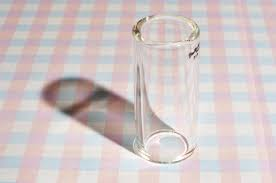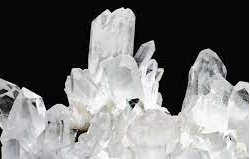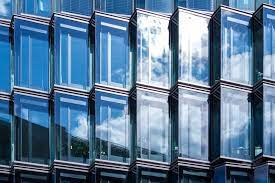Silicate non-metallic materials - glass
Glass is an amorphous not natural non-metallic material. It is normally made from a lot of inorganic minerals like quartz sand, borax, boric acid, barite, barium carbonate, sedimentary rock, feldspar, soda ash, and so on as the major resources, and a small amount of complementary resources are added. of. Its primary parts are silica and various other oxides.
The chemical composition of average glass is Na2SiO3, CaSiO3, SiO2 or Na2O · CaO · 6SiO2, etc. The primary component is silicate double salt, which is a blend and is an amorphous solid with an uneven structure.
Physical state of glass
Glass is not completely solid. Glass is neither crystalline, amorphous, polycrystalline, or mixed. The theoretical name is glass state.
From a microscopic perspective, glass is also a liquid. Its molecules do not have long-range order in space like crystals, but have short-range order similar to liquid. Glass maintains a specific shape like a solid and does not flow with gravity like a liquid.
The characteristics of the glassy state at room temperature are:
Short-range order, that is, within the range of several or dozens of atoms, atoms are arranged in an orderly manner, showing crystal characteristics;
Long-range disorder, that is, when the number of atoms is increased, it becomes a disordered arrangement state, and the degree of disorder is similar to that of a liquid.
On a macroscopic level, glass is a solid substance.
Glass is one such substance. The reason for this structure of glass is that the viscosity of the glass changes too quickly with temperature and the crystallization speed is too slow. When the temperature drops and crystallization has just begun, the viscosity has become very large, and the movement of atoms is restricted, causing this result. Therefore, the glassy state is similar to a solid liquid, and the atoms in the substance are always in the process of crystallization.
Therefore, the positions of the atoms in the glass appear to be fixed, but there are still forces between the atoms that encourage them to rearrange themselves. It is not a stable state, which is different from the atomic state in paraffin. Therefore, it is also not a crystal. At normal temperature, paraffin is completely solid, while glass can be regarded as a liquid with extremely high viscosity.

Characteristics of glass
1. Characteristics of glassy substances
l Isotropic
The molecular arrangement of glass is irregular, and its molecules are statistically uniform in space. In an ideal state, the physical and chemical properties of homogeneous glass, such as refractive index, hardness, elastic modulus, thermal expansion coefficient, thermal conductivity, electrical conductivity, etc., are the same in all directions.
l No fixed melting point
Because glass is a mixture, not crystalline. The transformation of glass from solid to liquid occurs within a certain temperature range (ie, softening temperature range). Unlike crystalline substances, it does not have a fixed melting point.
l Metastability
Glassy substances are generally obtained by rapid cooling of melts. When transitioning from a molten state to a glassy state, the viscosity increases sharply during the cooling process. The particles do not have time to arrange themselves regularly to form crystals, and the latent heat of crystallization is not released. Therefore, the glassy state Substances contain higher internal energy than crystalline substances, and their energy is between the molten state and the crystallized state, and is a metastable state. From a mechanical's opinion, glass is an unstable high-energy state. For example, there is a tendency to transform into a low-energy state, that is, there is a tendency to crystallize. Therefore, glass is a metastable solid material.
l Gradient reversibility
The process of glassy substances from molten state to solid state is gradual, and the changes in their physical and chemical properties are also continuous and gradual. This is obviously different from the crystallization process of a melt, where a new phase will inevitably appear, and many properties will undergo sudden changes near the crystallization temperature point. The transformation of glassy substances from molten state to solid state is completed within a wide temperature range. As the temperature gradually decreases, the viscosity of the glass melt gradually increases, and finally solid glass is formed, but no new phases are formed during the process. On the contrary, the process of glass heating into melt is also gradual.

2. Characteristics of glass
Depending on the type, glass has different properties.
l Good perspective and light transmission performance (the visible light transmittance of 3mm and 5mm thick lens glass is 87% and 84% respectively). The transmittance of near-infrared heat rays in sunlight is high, but it effectively blocks the far-infrared long-wave heat rays produced by the refraction of visible light to indoor wall tops, floors, furniture, and fabrics, so it can produce an obvious "warming room effect." . The transmittance of clear glass to ultraviolet rays in sunlight is low.
l Sound insulation and certain thermal insulation performance.
The tensile strength is much less than that of compressive and it is a typical brittle material.
l It has high chemical stability. Under normal circumstances, it has strong resistance to acids, alkalis, salts, chemical reagents and gases. However, long-term exposure to corrosive media can also lead to deterioration and damage, such as weathering and damage to glass. Mold will cause appearance damage and reduced light transmittance.
l Thermal stability is poor, and it is easy to explode under extreme cold and heat.
Ordinary flat glass
Flat glass has different thicknesses, and the thickness in millimeters is usually called centimeters or pieces. What we call 3 centimeters (pieces) of glass refers to glass with a thickness of 3mm.
1) 3-4cm glass, this kind of glass is mainly used for the surface of picture frames.
2) 5-6 mm glass is mainly used for small-area light-transmitting shapes such as exterior wall windows and doors.
3) 7-9mm glass is mainly used in indoor screens and other large-area shapes that are protected by frames.
4) 9-10cm glass, can be used for large-area indoor partitions, railings and other decoration projects.
5) 11-12cm glass can be used for floor spring glass doors and some partitions with large flow of people.
6) Glass above 15 mm is mainly used for larger floor spring glass doors and entire glass exterior walls.
Application of glass
Glass is widely used in construction, daily necessities, art, medical care, chemistry, electronics, instrumentation, nuclear engineering and other fields.
Colored flat glass: It has the characteristics of corrosion resistance, erosion resistance, and easy cleaning.
Glazed glass: It has good chemical stability and decorative properties.
Patterned glass, sprayed glass, milky glass, patterned glass, and ice-patterned glass: Depending on the craftsmanship of each pattern, they have various colors, looks, gloss effects, and are highly decorative.
Tinted glass: effectively absorbs solar radiation heat to achieve heat shielding and energy saving effects; absorbs more visible light, making the transmitted light soft; strongly absorbs ultraviolet rays to prevent the impact of ultraviolet rays on the interior; the color is bright and durable, adding to the beautiful appearance of the building.
Coated glass: It has good thermal insulation effect and is easy to cause light pollution to the outside environment.
Insulating glass: good optical performance, good thermal insulation performance, anti-condensation, and good sound insulation performance.
Tempered glass: high mechanical strength, good elasticity, good thermal stability, not easy to hurt people or self-explosion after breaking.
Wired glass: The fragments will not fly away after impact or sudden temperature changes; it can prevent the spread of flames for a short time; it has a certain anti-theft and anti-robbery effect.
Laminated glass: good transparency, high impact resistance, laminated PVB film adhesive function to protect fragments from scattering and hurting people, durability, heat resistance, moisture resistance, and high cold resistance.

Supplier
TRUNNANO is a supplier of silicate materials with over 12 years experience in nano-building energy conservation and nanotechnology development. It accepts payment via Credit Card, T/T, West Union and Paypal. Trunnano will ship the goods to customers overseas through FedEx, DHL, by air, or by sea. If you are looking for high-quality silicate materials please feel free to contact us and send an inquiry.


